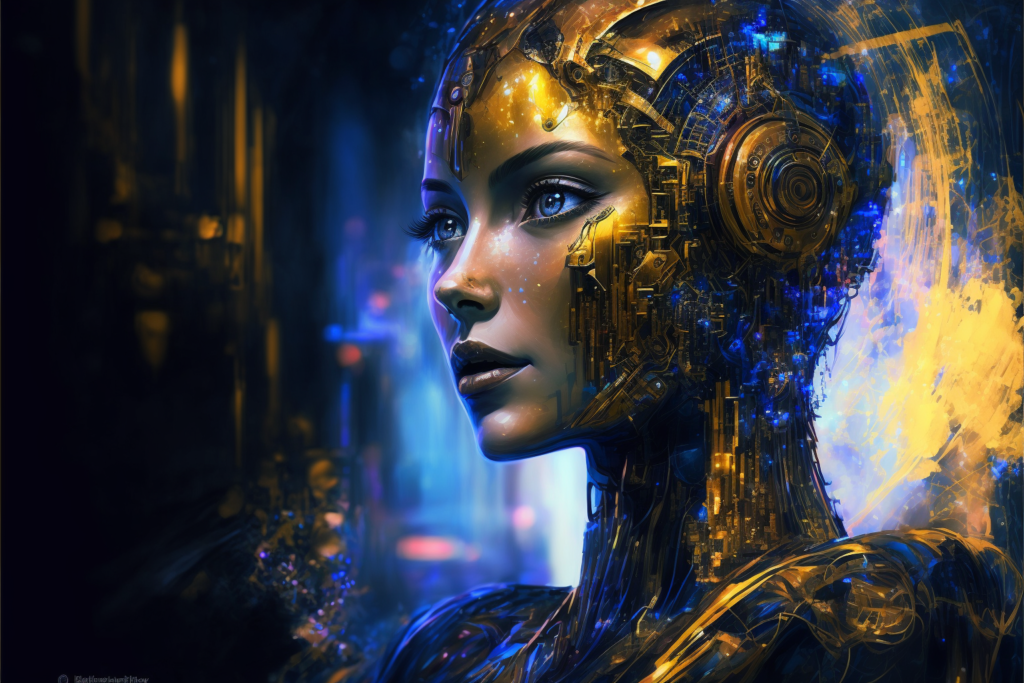I. Introduction to Computer Vision Technology
A. Definition of computer vision
Computer vision is a multidisciplinary field that focuses on teaching computers to process, analyze, and interpret visual information from the world, much like the human visual system. This technology enables machines to extract meaningful data from images and videos, making it possible to automate tasks that previously required human vision. At the core of computer vision technology are advanced algorithms and techniques, such as machine learning, deep learning, and pattern recognition, which empower machines to recognize and classify objects, detect patterns, and make decisions based on visual input.
B. Brief history and evolution of computer vision technology
The field of computer vision can be traced back to the 1960s when researchers started exploring the possibility of teaching computers to “see” and interpret images. One of the earliest milestones in computer vision was the work of Larry Roberts in 1963, which involved the development of a block-world scene analysis program. As technology advanced, computer vision research expanded into various areas, including edge detection, image segmentation, and feature extraction.
In the 1980s and 1990s, the focus shifted towards the integration of artificial intelligence (AI) and knowledge-based systems, which laid the groundwork for modern computer vision applications. With the rise of machine learning and deep learning in the 2000s, computer vision witnessed a significant leap forward. Convolutional neural networks (CNNs) emerged as a powerful tool for image classification, object detection, and semantic segmentation. The ImageNet Large Scale Visual Recognition Challenge (ILSVRC), a competition held from 2010 to 2017, played a pivotal role in advancing computer vision technology by promoting the development of more accurate and efficient algorithms.
Today, computer vision has become an essential component of various industry sectors, including manufacturing, healthcare, retail, and automotive. The rapid advancements in AI, big data, and hardware technologies continue to fuel the growth and adoption of computer vision applications, making it one of the most promising areas for investment and market research.
C. Importance of computer vision in the modern world
Computer vision technology has emerged as a crucial driving force in the modern world, influencing various aspects of our daily lives and transforming numerous industries. Its applications range from enhancing security through facial recognition systems to improving customer experiences in retail and e-commerce. The ability of computer vision to analyze and interpret visual data allows businesses to streamline operations, reduce costs, and optimize decision-making processes, thus boosting efficiency and competitiveness.
One of the significant reasons behind the rising importance of computer vision is its potential to complement and integrate with other emerging technologies, such as the Internet of Things (IoT), robotics, and AI. For instance, computer vision in manufacturing has enabled the development of smart factories, where connected devices, robotic systems, and automated quality control systems work together to maximize productivity and minimize errors.
D. Overview of computer vision applications across industries
As computer vision technology continues to advance, its applications are becoming increasingly diverse, spanning various industries and offering numerous benefits. Here are some notable examples:
- Manufacturing: In the manufacturing sector, computer vision is employed for quality control and defect detection. For instance, ADLINK Technology provides machine vision solutions that help manufacturers automate inspection processes and improve product quality.
- Healthcare: Computer vision technology is revolutionizing the healthcare industry, particularly in medical imaging and diagnostics. Companies like Aidoc utilize AI-powered computer vision algorithms to analyze medical images and assist physicians in diagnosing various conditions with greater accuracy.
- Retail: Retailers are leveraging computer vision to analyze customer behavior, manage inventory, and create personalized shopping experiences. Trax is a leading company that uses computer vision technology to provide retailers with real-time shelf data and actionable insights for better store management.
- Automotive: The automotive industry is witnessing a rapid adoption of computer vision in the development of advanced driver assistance systems (ADAS) and autonomous vehicles. Companies like NVIDIA are at the forefront of this revolution, developing computer vision solutions that enable safer and more efficient transportation.
- Agriculture: Computer vision applications in agriculture include crop monitoring, yield prediction, and precision farming. Farmers Edge is a notable example of a company that uses computer vision technology to provide farmers with data-driven insights for optimizing crop production and resource management.
These examples showcase the transformative power of computer vision technology across diverse sectors, opening up new avenues for investment and market research.
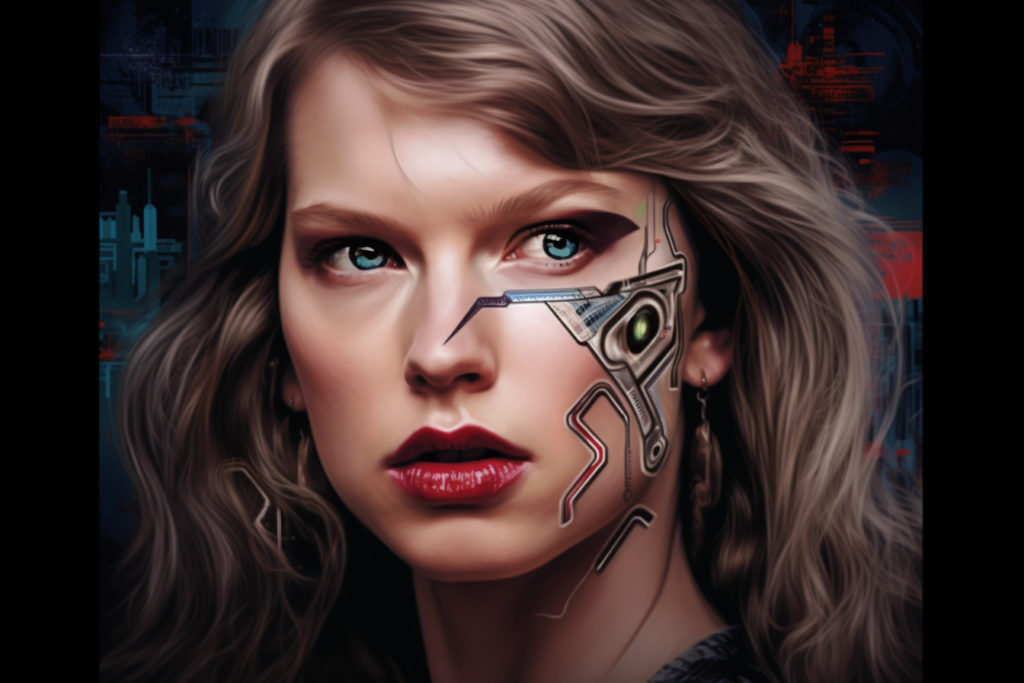
II. Advancements in Computer Vision Technology
A. Machine learning and deep learning techniques
Machine learning and deep learning have played a pivotal role in the evolution of computer vision technology, allowing for the development of more accurate and efficient algorithms. These techniques enable computers to learn from vast amounts of visual data, improving their ability to recognize and classify objects, detect patterns, and make decisions based on visual input. For example, convolutional neural networks (CNNs) have emerged as a powerful tool for image classification, object detection, and semantic segmentation, with applications in various industries.
Deep learning models, such as YOLO (You Only Look Once) and Faster R-CNN, have significantly improved the accuracy and speed of object detection in real-world scenarios. In addition, generative models like generative adversarial networks (GANs) have opened up new possibilities in image synthesis, allowing for the creation of realistic images from textual descriptions or the transformation of images from one domain to another.
B. Edge computing and real-time processing
Edge computing is a paradigm shift in data processing that involves bringing computation and storage capabilities closer to the source of data. This approach is particularly relevant to computer vision applications, as it enables real-time processing of visual information, reducing latency, and allowing for faster decision-making. Edge computing also addresses privacy concerns by keeping sensitive data on local devices, rather than transmitting it to remote data centers.
Companies like NVIDIA and Intel offer specialized hardware and software solutions for edge computing in computer vision, such as GPUs, FPGAs, and vision processing units (VPUs). These technologies enable the deployment of advanced computer vision algorithms on low-power devices, such as smartphones, drones, and IoT sensors, paving the way for a wide range of real-time applications, including smart surveillance, autonomous vehicles, and augmented reality (AR).
With these advancements in machine learning, deep learning, and edge computing, computer vision technology is poised to revolutionize various industry sectors, offering numerous opportunities for investment and market research.
C. Integration with other emerging technologies
Computer vision technology is increasingly being integrated with other emerging technologies, such as artificial intelligence (AI), robotics, the Internet of Things (IoT), and augmented reality (AR), to create innovative solutions and unlock new possibilities across various industries.
In the realm of robotics, computer vision plays a crucial role in enabling robots to navigate their environments, recognize objects, and interact with humans. Companies like Boston Dynamics and KUKA are at the forefront of developing advanced robotic systems that leverage computer vision technology for applications in warehouse automation, welding, and laser cutting.
Augmented reality (AR) is another area where computer vision technology is making a significant impact. By combining computer-generated imagery with real-world environments, AR applications can enhance user experiences in various fields, such as gaming, education, and healthcare. Companies like Magic Leap and Microsoft HoloLens are developing AR platforms that rely on computer vision for accurate tracking, mapping, and object recognition, enabling immersive and interactive experiences.
Moreover, the IoT ecosystem greatly benefits from computer vision technology, as it enables smart devices to capture, process, and analyze visual data, providing actionable insights for various applications. For example, FLIR Systems offers thermal imaging cameras integrated with computer vision algorithms for applications in building diagnostics, predictive maintenance, and process control.
D. Advancements in hardware for computer vision
Hardware advancements have played a significant role in the progress of computer vision technology, enabling the development of faster, more efficient, and power-conscious systems. Companies like NVIDIA, Intel, and Qualcomm are developing specialized hardware components, such as GPUs, VPUs, and AI accelerators, to meet the computational demands of computer vision applications.
For instance, NVIDIA’s A100 Tensor Core GPU is designed to accelerate AI and high-performance computing (HPC) workloads, including computer vision tasks like image classification and object detection. Intel’s Movidius VPUs are specifically designed for edge computing applications in computer vision, offering low-power and high-performance solutions for devices like drones, robots, and IoT sensors. Qualcomm’s Snapdragon AI Platform provides a suite of hardware and software components for AI-powered computer vision applications on smartphones and other devices, enabling features like scene recognition, facial recognition, and AR experiences.
Furthermore, advancements in sensor technology have improved the quality and versatility of image capture in computer vision systems. Companies like Sony Semiconductor Solutions and ON Semiconductor develop high-resolution and high-speed image sensors that can capture more detailed visual information, even in challenging lighting conditions. These sensors are essential for applications such as autonomous vehicles, industrial automation, and surveillance systems.
As hardware continues to evolve and improve, computer vision technology is set to become more efficient, accurate, and accessible, driving further innovation and growth in various industries and creating new opportunities for investment and market research.
III. Applications of Computer Vision in Key Industries
A. Healthcare and Medical Imaging
Computer vision technology has shown immense potential in transforming healthcare and medical imaging by improving diagnostics, treatment planning, and patient monitoring. AI-driven algorithms can analyze medical images, such as X-rays, CT scans, and MRIs, to identify and classify abnormalities with high accuracy and speed, assisting healthcare professionals in their decision-making process.
For instance, Aidoc develops AI-powered solutions for radiology that can detect critical conditions like intracranial hemorrhage, pulmonary embolism, and cervical spine fractures. Similarly, Zebra Medical Vision (now Nanox) uses computer vision algorithms to analyze medical imaging data for early detection of diseases like cancer, liver diseases, and cardiovascular conditions.
Additionally, computer vision technology is being utilized in surgical procedures through the integration of augmented reality (AR) and robotics. Companies like Intuitive Surgical and Verb Surgical (now part of J&J) are developing advanced surgical systems that leverage computer vision to provide surgeons with enhanced visualization and precision during operations.
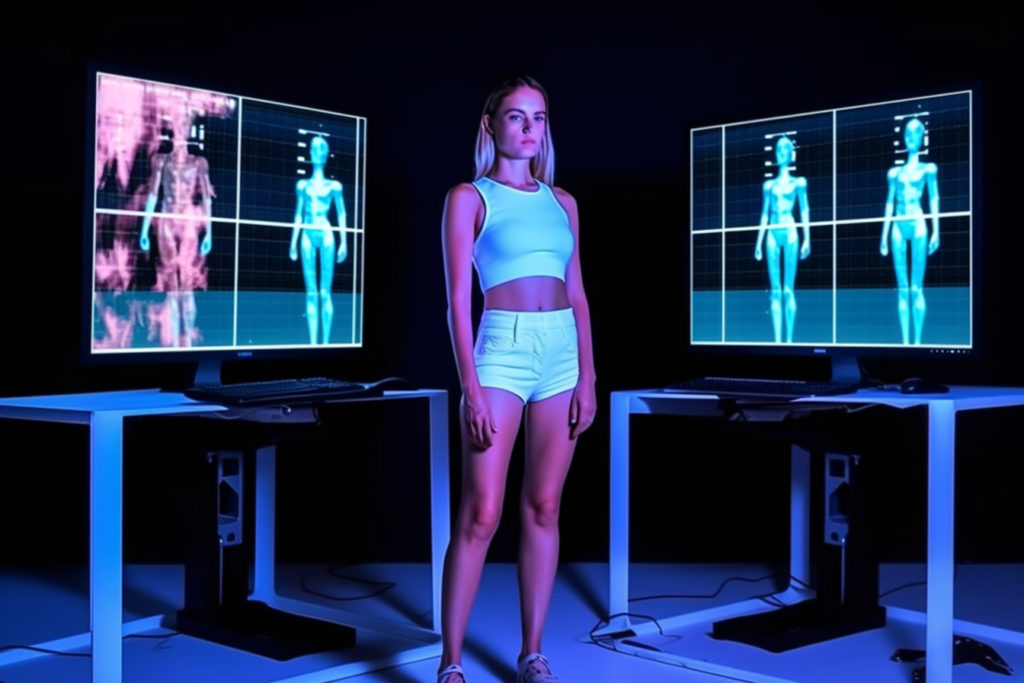
B. Automotive and Autonomous Vehicles
Computer vision is a key enabler for the development of autonomous vehicles, as it allows cars to perceive their surroundings, recognize objects, and make real-time decisions based on visual input. Advanced driver assistance systems (ADAS) and self-driving vehicles rely on a combination of computer vision algorithms, sensors, and hardware to detect obstacles, track other vehicles and pedestrians, and navigate complex road environments.
Companies like Waymo, Tesla, and NVIDIA are at the forefront of developing autonomous vehicle technologies that use computer vision for real-time perception and decision-making. For example, Waymo’s self-driving cars use a combination of cameras, lidar, and radar sensors to capture a detailed and comprehensive view of the environment, while Tesla’s Autopilot system relies on cameras and computer vision algorithms to enable features like adaptive cruise control, lane keeping, and self-parking.
Besides autonomous driving, computer vision technology also enhances vehicle safety and driver assistance features, such as Mobileye’s ADAS solutions that offer lane departure warning, forward collision warning, and pedestrian detection. These systems can help reduce the number of accidents and improve overall road safety.
As computer vision technology continues to advance and mature, its applications in the automotive industry will expand, creating new opportunities for investment and market research in areas like autonomous vehicles, smart transportation, and vehicle safety systems.
C. Retail and E-commerce
Computer vision technology is revolutionizing the retail and e-commerce industries by enhancing customer experiences, optimizing operations, and providing valuable insights for businesses. One of the most prominent applications of computer vision in retail is visual search, which allows customers to search for products using images instead of text, making it easier for them to find the items they want.
Companies like Slyce and ViSenze offer visual search solutions that enable retailers to integrate image-based search capabilities into their e-commerce platforms, improving product discovery and customer engagement. Additionally, computer vision technology is used to develop virtual fitting rooms and augmented reality (AR) applications that allow customers to virtually “try on” products, such as clothing or accessories, before making a purchase. Wannaby and Perfect Corp. are examples of companies offering these solutions.
In the brick-and-mortar retail space, computer vision is used to streamline operations, such as inventory management and loss prevention. Trax provides computer vision-based shelf monitoring solutions that enable retailers to track inventory levels and product placement in real-time, ensuring optimal stock availability and store presentation. Everseen offers AI-powered computer vision systems that can detect and prevent theft and fraud at the point of sale, helping retailers reduce shrinkage and improve profit margins.
Computer vision technology is also utilized in retail analytics to gain insights into customer behavior, store layout, and product performance. RetailNext and Ipsos Retail Performance offer solutions that leverage computer vision to analyze in-store customer movements, dwell times, and interactions with products, providing retailers with actionable data to optimize store layouts and marketing strategies.
As computer vision technology continues to advance, its applications in the retail and e-commerce industries are expected to grow and diversify, offering new opportunities for businesses to enhance customer experiences, optimize operations, and gain a competitive edge in the market.
D. Manufacturing and Industrial Automation
Computer vision technology is transforming the manufacturing and industrial automation sectors by enabling advanced automation, quality control, and predictive maintenance. Computer vision systems can analyze visual data from cameras and sensors installed on production lines, robots, and other equipment to ensure the accuracy and efficiency of manufacturing processes.
Companies like Cognex and Keyence provide computer vision solutions for applications such as defect detection, part identification, and robotic guidance, helping manufacturers improve product quality, reduce waste, and optimize production workflows. For example, Cognex’s machine vision systems are used in industries like automotive, electronics, and consumer goods to automate complex inspection tasks and ensure product quality.
Moreover, computer vision technology enables predictive maintenance by analyzing visual data from equipment and identifying signs of wear or potential failure. Companies like FLIR Systems and Sight Machine offer solutions that leverage computer vision and thermal imaging for monitoring the health of industrial equipment and predicting maintenance needs, reducing downtime and maintenance costs.
E. Security and Surveillance
Computer vision technology plays a crucial role in modern security and surveillance systems, providing enhanced monitoring capabilities and real-time threat detection. By analyzing video feeds from security cameras, computer vision algorithms can identify suspicious activities, track individuals, and recognize objects, such as vehicles or weapons, providing security personnel with valuable information to make informed decisions and respond effectively to incidents.
Companies like Axis Communications and Avigilon develop advanced surveillance systems that utilize computer vision technology for applications like facial recognition, license plate recognition, and intrusion detection. For example, Avigilon’s video analytics solutions can recognize and track people and vehicles across multiple cameras, providing comprehensive situational awareness in real-time.
Furthermore, computer vision technology is being employed to develop smart city infrastructure that enhances public safety and traffic management. For instance, BriefCam offers a video analytics platform that uses computer vision to analyze video feeds from citywide surveillance cameras, providing insights into traffic patterns, pedestrian flow, and public gatherings. This information can be used by city planners and law enforcement agencies to optimize urban planning, emergency response, and crime prevention strategies.
As computer vision technology continues to advance, its applications in security and surveillance are expected to grow, providing more sophisticated and effective solutions for ensuring public safety and protecting critical assets.
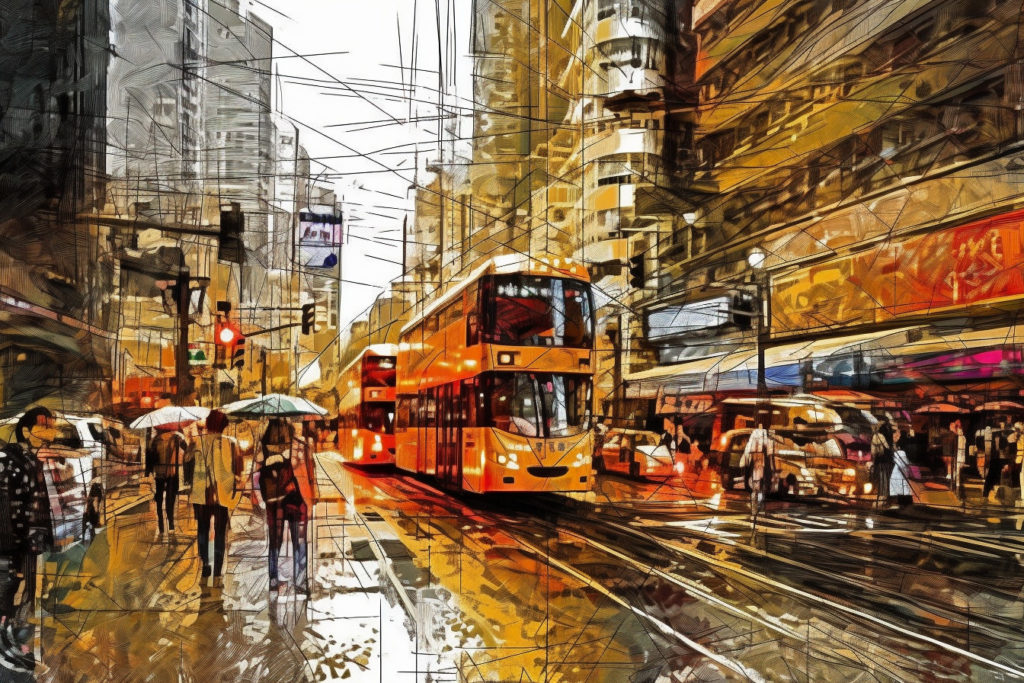
IV. Investment Opportunities and Market Growth
A. Recent trends in computer vision investments
Investment in computer vision technology has been on the rise as businesses and investors recognize its potential to transform various industries. According to a CB Insights report, funding for computer vision startups has experienced significant growth over the past few years, with global funding reaching $6.6 billion in 2022, up from $2.9 billion in 2019.
Several high-profile acquisitions and IPOs have also taken place in recent years, highlighting the increasing interest in computer vision technology. For example, in 2020, Apple acquired Spectral Edge, a startup specializing in image processing, and NVIDIA announced its plan to acquire Arm Holdings, a leading provider of AI and computer vision hardware and software solutions. The Arm acquisition however, was terminated due to fear of anti-competitive laws and regulations. In 2022, Canvas, a 3D computer vision startup, raised $24 million in a Series B funding round led by Menlo Ventures and Google Ventures.
These trends indicate a growing interest in computer vision technology among investors and a recognition of its potential to drive innovation and growth across multiple industries.
B. Venture capital and startup landscape
The startup landscape in the computer vision space is diverse and rapidly evolving, with numerous venture capital firms and accelerators supporting the development of innovative solutions. Some of the leading venture capital firms investing in computer vision startups include Sequoia Capital, Khosla Ventures, and Accel Partners.
Some notable computer vision startups that have attracted significant investment include:
- Scale AI: A data labeling platform that provides high-quality training data for computer vision models. The company has raised over $277 million in funding from investors such as Coatue Management, Founders Fund, and Index Ventures.
- OpenAI: A research organization focused on developing artificial intelligence and computer vision technologies. OpenAI has received over $1 billion in funding from investors like Reid Hoffman, Sam Altman, and Elon Musk.
- Sighthound: A company specializing in computer vision software for applications like facial recognition, object detection, and vehicle tracking. Sighthound has raised more than $20 million in funding from investors including Union Grove Venture Partners and Raptor Group.
These startups and their investors are driving the development and commercialization of cutting-edge computer vision technologies, enabling new applications and opportunities for growth across various industries.
C. Growth projections for the computer vision market
The global computer vision market is expected to experience significant growth in the coming years, driven by increasing demand for automation, advancements in AI, and the growing adoption of computer vision across various industries. According to a Markets and Markets report, the computer vision market is projected to reach $19.1 billion by 2027, growing at a CAGR (Compound Annual Growth Rate) of 7.8% from 2022 to 2027.
Key factors contributing to this growth include the proliferation of IoT devices, increased adoption of edge computing, and the expanding use of computer vision technology in industries like automotive, healthcare, retail, and manufacturing. Additionally, government initiatives promoting the development and adoption of AI and computer vision technologies are expected to further drive market growth.
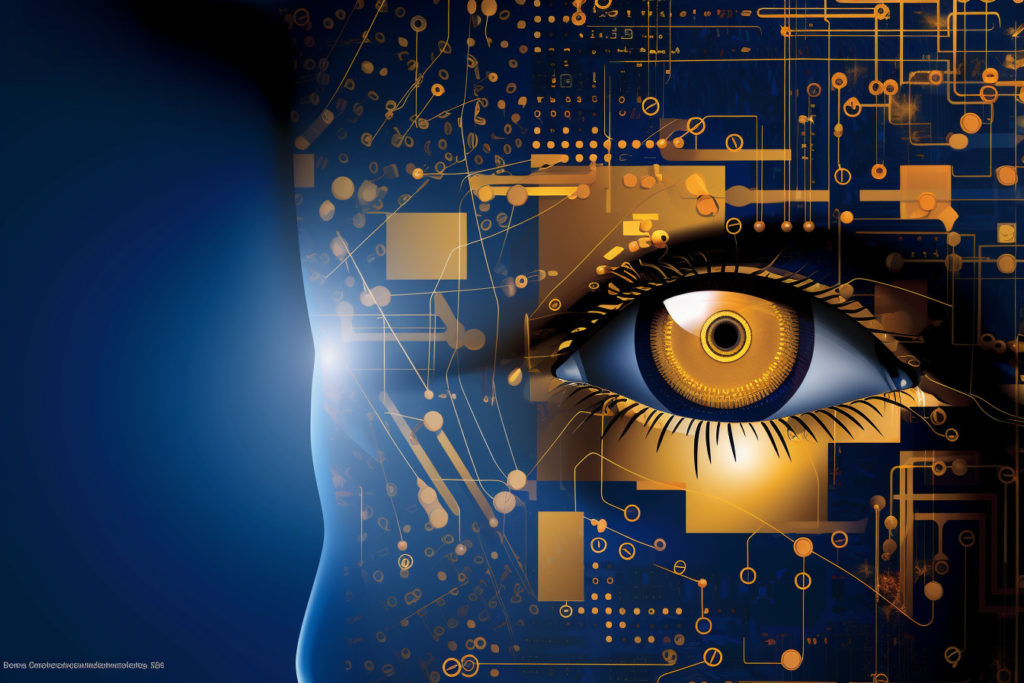
D. Promising sectors for computer vision adoption
As computer vision technology continues to advance, several sectors are poised to benefit from its widespread adoption, offering attractive investment opportunities. Some of these sectors include:
-
- Automotive: With the development of autonomous vehicles, computer vision is playing a critical role in enabling advanced driver assistance systems (ADAS), obstacle detection, and navigation. Companies like Mobileye and Waymo are at the forefront of this innovation, attracting significant investment.
- Healthcare: Computer vision applications in medical imaging, diagnostics, and surgical assistance are transforming the healthcare industry. Startups like Zipline and PathAI are leveraging computer vision technology to improve patient outcomes and reduce healthcare costs.
- Manufacturing and industrial automation: Computer vision systems are being increasingly used for quality control, defect detection, and robotic guidance in manufacturing processes. Companies like Cognex and Universal Robots are leading the charge in developing innovative solutions for these applications.
- Security and surveillance: Advanced computer vision algorithms are enhancing the capabilities of security and surveillance systems, with companies like Axis Communications and Avigilon providing cutting-edge solutions for threat detection, facial recognition, and intrusion detection.
E. Major players in the computer vision industry
The computer vision industry consists of a mix of established tech giants and innovative startups, all striving to develop and deploy groundbreaking computer vision technologies. Some of the key players in the computer vision industry include:
- NVIDIA: A leading provider of GPUs and AI hardware, NVIDIA has made significant investments in computer vision technology, developing platforms like the NVIDIA DRIVE for autonomous vehicles and the Jetson Xavier NX for robotics and edge computing applications.
- Intel: Through its acquisition of Movidius and Nervana, Intel has expanded its computer vision capabilities, offering hardware solutions like the Movidius Vision Processing Unit (VPU) and software tools like the OpenVINO toolkit for computer vision and AI developers.
- Microsoft: Microsoft’s computer vision offerings include the Azure Computer Vision API, which provides developers with access to powerful image analysis capabilities, and the Kinect sensor, which has been used for a wide range of computer vision applications, from gaming to robotics.
- Google: As a leader in AI research, Google has developed several computer vision technologies, such as the Google Cloud Vision API for image recognition and analysis, and Google Brain Robotics, which focuses on advancing computer vision and machine learning techniques for robotics applications.
- IBM: IBM’s Watson Visual Recognition service provides developers with a suite of tools for building computer vision applications, while its Maximo Visual Inspection platform offers industry-specific solutions for manufacturing, energy, and utilities sectors.
- Amazon Web Services (AWS): AWS offers a range of computer vision services, such as Amazon Rekognition for image and video analysis, and Amazon Panorama for creating computer vision applications at the edge. AWS also provides AWS RoboMaker, a service that enables developers to develop, simulate, and deploy intelligent robotics applications using computer vision and other AI capabilities.
- Facebook: Facebook’s AI research division, Facebook AI, has been working on several computer vision projects, including Detectron2, an open-source platform for object detection and segmentation, and Map With AI, an initiative aimed at improving the accuracy of maps using computer vision techniques.
These major players are shaping the future of computer vision technology by investing in research, developing innovative products and services, and collaborating with startups and other industry stakeholders to drive adoption across various sectors.
V. Challenges and Future Outlook of Computer Vision in Industry
A. Ethical concerns and data privacy issues
- Facial recognition and surveillance: The widespread use of computer vision in surveillance systems and facial recognition technology raises ethical concerns about privacy and personal autonomy. For example, the ACLU has raised concerns about the potential misuse of facial recognition technology by law enforcement and government agencies, leading to increased surveillance and potential violations of civil liberties.
- Bias and fairness in computer vision algorithms: As computer vision systems rely on large datasets for training, biases present in the data can lead to unfair and discriminatory outcomes. Research has highlighted instances of biased algorithms in areas such as criminal justice, hiring practices, and advertising, emphasizing the need for greater transparency and fairness in the development and deployment of computer vision technologies.
B. Technical challenges and limitations
- Scalability and processing power requirements: Advanced computer vision applications often require significant computational resources, which can be a challenge for small and medium-sized businesses. The advent of NVIDIA A100 GPUs and cloud-based computer vision services like Amazon Rekognition have helped alleviate these limitations, but further improvements in processing power and efficiency will be crucial for widespread adoption.
- Data quality and annotation: The effectiveness of computer vision algorithms heavily depends on the quality and quantity of the training data. Acquiring large, diverse, and accurately annotated datasets can be a significant challenge, especially for specialized applications. Companies like Appen and Scale AI provide data annotation services to address these challenges, but ensuring data quality and diversity remains a priority for the industry.
![]()
C. Adoption barriers across industries
- Cost and complexity of implementation: Implementing computer vision systems can be expensive and complex, particularly for small and medium-sized businesses. Cloud-based services like Google Cloud Vision and Azure Computer Vision have helped lower the barriers to entry, but there is still a need for affordable and accessible solutions to drive broader adoption.
- Resistance to change and workforce impact: The adoption of computer vision technologies may face resistance from employees who fear job displacement or the introduction of unfamiliar technologies. To mitigate these concerns, companies can invest in workforce training and emphasize the potential benefits of computer vision, such as improved efficiency and reduced human error.
D. Future developments in computer vision technology
- Improved algorithms and computational efficiency: As computer vision research continues to advance, new algorithms and techniques will be developed to enhance the accuracy and efficiency of computer vision systems. For example, the development of capsule networks has the potential to improve object recognition and reduce the computational requirements of deep learning models.
- Integration with emerging technologies (AR, VR, and quantum computing): The convergence of computer vision with other emerging technologies, such as augmented reality (AR), virtual reality (VR), and quantum computing, will lead to new applications and use cases. For instance, computer vision-powered AR can be used for assisted surgery, while VR can benefit from computer vision for more immersive and realistic experiences. Additionally, advances in quantum computing may enable more efficient processing of large-scale computer vision tasks, further expanding the potential applications of the technology.
E. Potential impact of computer vision on society and the global economy
The widespread adoption of computer vision technology is expected to have a significant impact on society and the global economy. The technology has the potential to revolutionize industries ranging from healthcare to retail, enabling more efficient and accurate processes, and improving the quality of life for individuals around the world.
According to a report by Allied Market Research, the global computer vision market is projected to reach $26.8 billion by 2027, growing at a CAGR of 7.6% from 2020 to 2027. This growth is driven by the increasing demand for automation and quality inspection in various industries, as well as the development of advanced technologies such as deep learning and neural networks.
As computer vision technology continues to advance and become more accessible, it has the potential to drive significant innovation and growth across various industries. However, it is crucial that ethical considerations and data privacy concerns are addressed to ensure the responsible development and deployment of the technology.
Conclusion
Computer vision technology has come a long way in recent years and is poised to have a significant impact on various industries in the future. From healthcare to manufacturing, computer vision is being used to improve efficiency, accuracy, and safety. However, there are also significant challenges that need to be addressed, including ethical concerns, technical limitations, and adoption barriers. As the technology continues to evolve and become more accessible, it is crucial that these challenges are addressed in a responsible and ethical manner to ensure the benefits of computer vision are realized while minimizing potential harms.
Our Other Reports
Looking for more industry reports to help you stay up-to-date on the latest trends and developments? Check out our other comprehensive reports:
- Infrastructure as a Service: A Look at Providers, Solutions, and Benefits
- Cloud Computing Industry Report: Opportunities and Challenges for Finance Professionals and Investors
- The Future of Derivatives Trading: New Market Research Report
- The Future of Industry: How Artificial Intelligence is Driving Growth
- Global Ecommerce Growth Forecast 2023: A Comprehensive Analysis
- Unlocking the Potential of Drones: A Comprehensive Industry Report
- The Booming Electric Vehicle Industry Report: Key Trends & Insights
- The Future of Marketing: A Comprehensive Guide to Digital and Content Marketing
- Big Data Industry Report: A Comprehensive Guide for Investors
- Identity in the Digital Age: Verification, Protection, and Management in Financial Services
These reports cover a wide range of industries and topics, including cloud computing, ecommerce, drones, electric vehicles, marketing, and big data. They offer valuable insights and data for finance professionals and investors interested in staying ahead of the curve.






